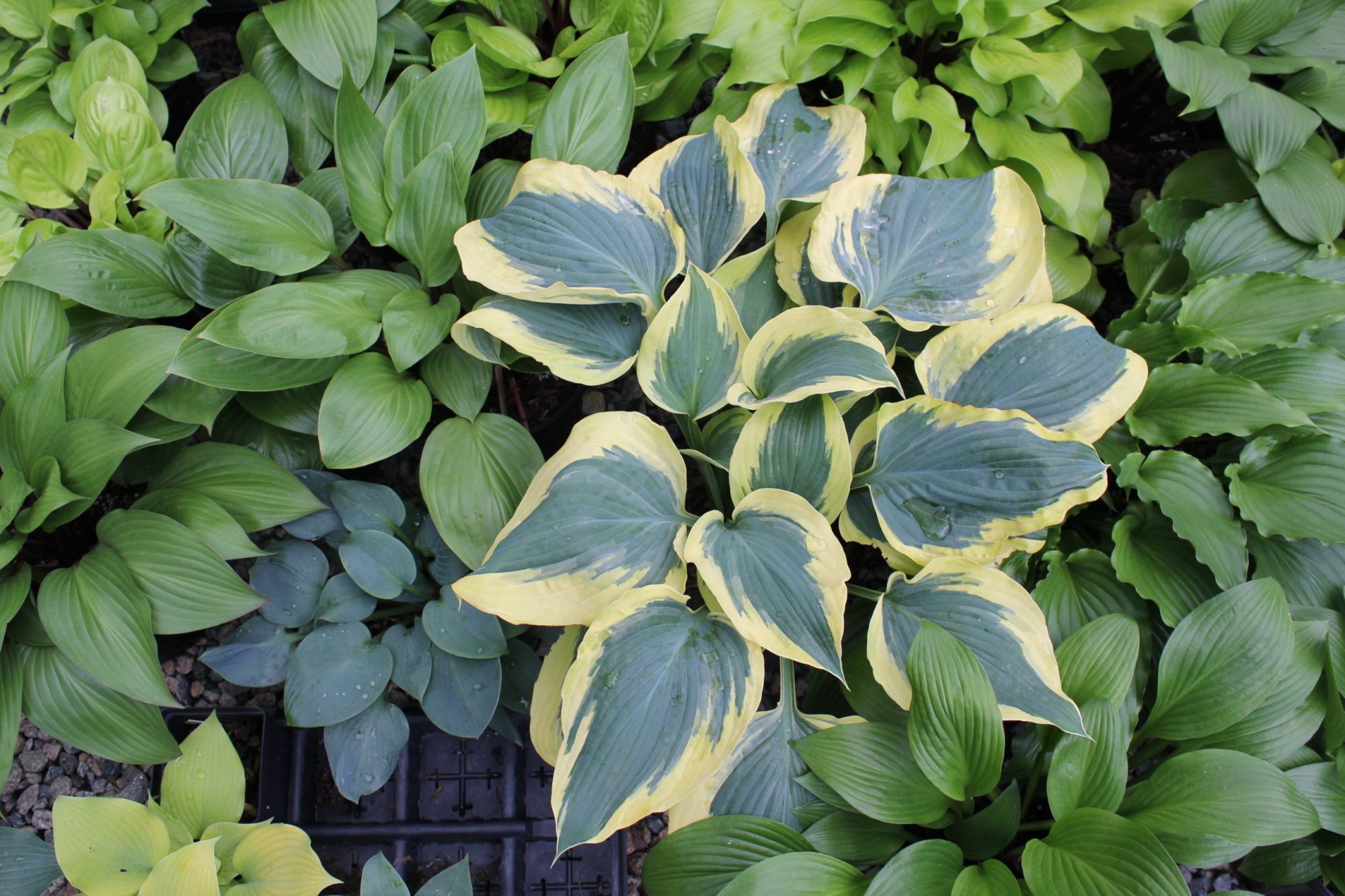by Bob Solberg
I often run into high-powered plant people, much more knowledgeable than me, who ask, “Haven’t hosta hybridizers done about all you can do with hostas? They all are starting to look the same to me.” I guess that is true if you discount all the new red blushing hostas but then, the novelty may wear off even blushers one day.
I often wonder what is the next big improvement that hybridizers can bring to their hosta seedlings. Red is not dead. Hostas can still become redder, but also the red can last all season. I’d say, Dan Heims’ ‘Liam’s Smile’ is a more dependable blushing hosta in warmer climes with interestingly more purple in the leaf veins than in the petioles. It is a new ingredient to add to the hybridizing pot.

Some hosta hybridizers think hosta flowers might be the next best thing. They are producing many new colors for hosta flowers, rich dark purples, even black, light pinks, and reds, as well as yellow and green. I have seen brown ones too, interesting but looking faded when fresh. Large, pink flowers on a blue hosta might be a showstopper.
But flowers and red trim are accessories, much like the messy ruffles on many of the new blue hostas these days. Maybe that is where we are with the breeding right now, just a little tweak here and little tweak there. Hosta specialists might appreciate these new bells and whistles, but they may be lost on the gardening public or even high-level horticulturists.
So, what is really new in hostas? Well, have you ever seen a yellow hosta that turns blue? Yellow hostas usually green up a little, or a lot, later in the season. They almost never have a blue cast to them. That’s different! For many years we just called it 44B, a great hybridizing hosta, a parent of ‘Ruby Earrings’ and ‘Peach Brandy’, and now I am ready to pass it along to you. It is ‘Calm before the Storm’, bright yellow sunshine in early spring and then suddenly an afternoon storm brewing. Its rich purple petioles highlight the spring yellow color and the stormy summer feel. Check it out in the shop. I think it is pretty cool!




